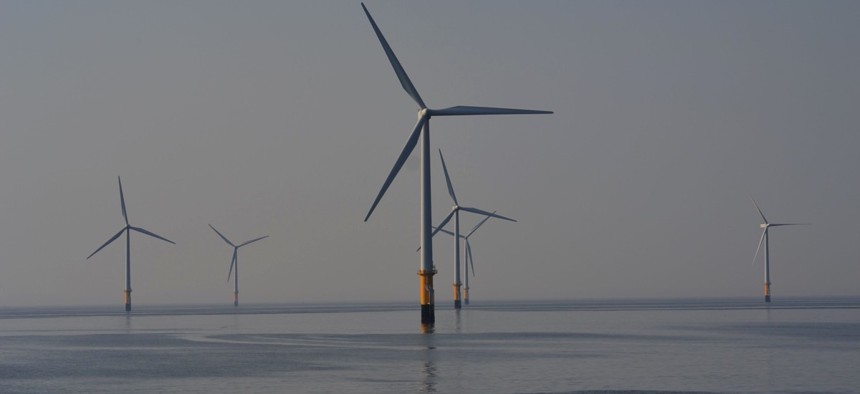New Jersey Looks to Lead U.S. Offshore Wind Development


Connecting state and local government leaders
The industry, long dominated by Europe, has been making its way across the pond with governors and state legislatures as its champions.
Danish offshore wind developer Ørsted will open an Atlantic City, New Jersey-based office in May, as the Garden State looks to lead the U.S. uptake of a renewable energy source that has grown and flourished in Europe.
Gov. Phil Murphy announced the next step in New Jersey’s effort to generate 3,500 megawatts of offshore wind energy by 2030 on Wednesday at the International Offshore Wind Partnering Forum in Princeton.
Ørsted has already performed geophysical surveys of the site for Ocean Wind, a wind farm proposed 10 miles off the state’s coast, under New Jersey’s Offshore Wind Economic Development Act.
“For us, this is more than just energy,” Murphy said in his keynote address. “It’s also about the economy; it can lead this state to long-term economic stability.”
The typical Ørsted project creates 1,000 construction jobs a year for two to three years and then 100 permanent careers over the 25-year lifespan of the wind farm.
In 2016, Massachusetts paved the way for offshore wind in the U.S. by passing legislation for the first large-scale procurement. A winner will be announced later in April.
Maryland followed in May 2017, approving financing for two projects accounting for 368 megawatts of offshore wind and simultaneously setting the U.S. market price point of 13 cents per kilowatt hour.
With 15 gigawatts of offshore wind potential leased by the federal government, comparable to present European deployment, the Business Network for Offshore Wind is pushing for developers and supply chain companies to increase investment and train local residents.
The network's president, Liz Burdock, estimates 8 gigawatts of offshore wind will be financed and at least under development by 2030, whereas the current U.S. pipeline represents 5 gigawatts.
“With each large-scale procurement the industry gains more traction, and offshore wind is being viewed more and more as a competitor to not just fossil fuels but also other clean energy sources,” Burdock said in her Wednesday speech. “We need to connect our voices into one, very loud, strong voice to make sure offshore wind receives its fair share in federal and state energy policies.”
Dave Nyczepir is a News Editor at Government Executive’s Route Fifty and is based in Washington, D.C.

NEXT STORY: Seattle Mayor Pulls Brake on Streetcar Expansion Project





